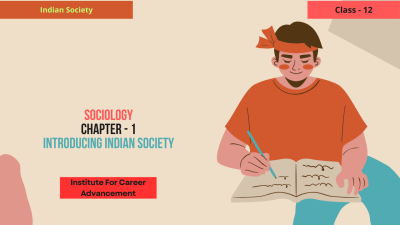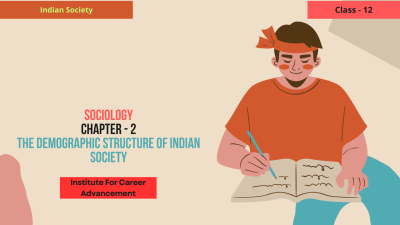The Challenges of Cultural Diversity - Class 12
The Challenges of Cultural Diversity is a Class 12 course that explores the complexities and challenges associated with living in a culturally diverse society. It examines the factors that contribute to cultural diversity, the potential benefits and challenges of diversity, and strategies for promoting cultural understanding and tolerance. Key Topics: Cultural Identity: The concept of cultural identity and how it is shaped by various factors, such as ethnicity, religion, language, and nationality. Cultural Diversity: The existence of multiple cultures within a society and the factors that contribute to cultural diversity. Cultural Conflict: The challenges that arise when people from different cultures interact and encounter differences in values, beliefs, and customs. Cultural Stereotypes: The role of stereotypes in perpetuating cultural misunderstandings and prejudice. Cultural Sensitivity: The importance of being aware of and respectful of different cultures. Strategies for Promoting Cultural Understanding: Effective strategies for fostering cultural understanding and tolerance, such as intercultural communication, education, and cultural exchange programs. Learning Objectives: Understand the concept of cultural diversity and its significance in today's world. Analyze the challenges that arise from cultural differences. Develop cultural sensitivity and respect for different cultures. Evaluate strategies for promoting cultural understanding and tolerance. Apply critical thinking and problem-solving skills to address cultural issues. The Challenges of Cultural Diversity is a valuable course that provides students with a comprehensive understanding of the complexities of living in a multicultural society. It equips them with the knowledge and skills necessary to navigate cultural differences, promote understanding, and contribute to a more inclusive and harmonious world. দ্য চ্যালেঞ্জস অফ কালচারাল ডাইভারসিটি হল দ্বাদশ শ্রেণির একটি কোর্স যা সাংস্কৃতিকভাবে বৈচিত্র্যময় সমাজে বসবাসের সাথে সম্পর্কিত জটিলতা এবং চ্যালেঞ্জগুলি অন্বেষণ করে। এটি সাংস্কৃতিক বৈচিত্র্যে অবদান রাখার কারণগুলি, বৈচিত্র্যের সম্ভাব্য সুবিধা ও চ্যালেঞ্জ এবং সাংস্কৃতিক বোঝাপড়া ও সহনশীলতা প্রচারের কৌশলগুলি পরীক্ষা করে। মূল বিষয়ঃ সাংস্কৃতিক পরিচিতিঃ সাংস্কৃতিক পরিচয়ের ধারণা এবং জাতিগত, ধর্ম, ভাষা এবং জাতীয়তার মতো বিভিন্ন কারণের দ্বারা এটি কীভাবে রূপায়িত হয়। সাংস্কৃতিক বৈচিত্র্যঃ একটি সমাজের মধ্যে একাধিক সংস্কৃতির অস্তিত্ব এবং সাংস্কৃতিক বৈচিত্র্যে অবদান রাখার কারণগুলি। সাংস্কৃতিক দ্বন্দ্বঃ বিভিন্ন সংস্কৃতির লোকেরা যখন মূল্যবোধ, বিশ্বাস এবং রীতিনীতিতে পার্থক্যের মুখোমুখি হয় তখন যে চ্যালেঞ্জগুলি দেখা দেয়। সাংস্কৃতিক স্টেরিওটাইপগুলিঃ সাংস্কৃতিক ভুল বোঝাবুঝি এবং কুসংস্কার স্থায়ী করার ক্ষেত্রে স্টেরিওটাইপগুলির ভূমিকা। সাংস্কৃতিক সংবেদনশীলতা-বিভিন্ন সংস্কৃতি সম্পর্কে সচেতন ও শ্রদ্ধাশীল হওয়ার গুরুত্ব। সাংস্কৃতিক বোঝাপড়া বৃদ্ধির কৌশলঃ সাংস্কৃতিক বোঝাপড়া ও সহনশীলতা বৃদ্ধির জন্য কার্যকর কৌশল, যেমন আন্তঃসাংস্কৃতিক যোগাযোগ, শিক্ষা এবং সাংস্কৃতিক বিনিময় কর্মসূচি। শেখার উদ্দেশ্যঃ আজকের বিশ্বে সাংস্কৃতিক বৈচিত্র্যের ধারণা এবং এর তাৎপর্য বুঝুন। সাংস্কৃতিক পার্থক্য থেকে উদ্ভূত চ্যালেঞ্জগুলি বিশ্লেষণ করুন। বিভিন্ন সংস্কৃতির প্রতি সাংস্কৃতিক সংবেদনশীলতা এবং সম্মান গড়ে তুলুন। সাংস্কৃতিক বোধগম্যতা এবং সহনশীলতা বৃদ্ধির জন্য কৌশলগুলি মূল্যায়ন করুন। সাংস্কৃতিক সমস্যা সমাধানের জন্য সমালোচনামূলক চিন্তাভাবনা এবং সমস্যা সমাধানের দক্ষতা প্রয়োগ করুন। সাংস্কৃতিক বৈচিত্র্যের চ্যালেঞ্জ একটি মূল্যবান কোর্স যা শিক্ষার্থীদের বহুসংস্কৃতির সমাজে বসবাসের জটিলতা সম্পর্কে ব্যাপক ধারণা প্রদান করে। এটি তাদের সাংস্কৃতিক পার্থক্যগুলি নেভিগেট করতে, বোঝার প্রচার করতে এবং আরও অন্তর্ভুক্তিমূলক এবং সুরেলা বিশ্বে অবদান রাখার জন্য প্রয়োজনীয় জ্ঞান এবং দক্ষতার সাথে সজ্জিত করে।
English
Last updated
Wed, 27-Nov-2024



















